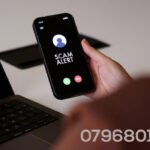Planning the audio-visual (AV) setup for your next conference is crucial to ensure a seamless and professional experience for all attendees. Whether you’re hosting a small seminar or a large-scale international conference, the right AV equipment and planning can make all the difference. In this guide, we’ll walk you through the step-by-step process of planning your AV setup effectively. From understanding your needs to selecting equipment and ensuring smooth execution, this guide will help you create a successful conference experience. Additionally, we’ll highlight the importance of working with professionals like Reid AV Services, experts in delivering customized AV solutions for events of all sizes.
- Understanding the Scope of Your Conference
Assessing Your Conference Needs
Before diving into equipment selection, it’s crucial to assess the needs of your conference. By understanding the specifics of your event, you’ll be able to choose the appropriate AV tools to meet your objectives.
Key Considerations:
- Audience Size: The number of attendees will directly influence the type of equipment you need. A larger audience will likely require more advanced audio systems, larger screens, and enhanced projection options.
- Venue Layout: Is your venue a large auditorium or a smaller seminar room? The layout of the space will dictate the kind of equipment you need, as larger rooms will require more powerful sound systems, while smaller spaces may need more intimate setups.
- Session Types: Different sessions require different AV setups. For example, keynotes may need larger projection systems and wireless microphones, while breakout sessions may only require simpler setups with smaller screens.
Why It Helps:
Understanding the scope of your event helps tailor the AV setup to your needs, ensuring you have the right equipment and setups for a flawless experience. Knowing the details upfront also helps you make informed decisions about equipment and technical support.
- Choosing the Right AV Equipment
Audio Equipment Selection
Audio quality is paramount for any conference. Whether it’s a keynote speaker, panel discussion, or workshop, clear audio is essential to engage attendees and deliver a professional experience.
What You’ll Need:
- Microphones: Depending on your conference format, you might need:
- Lapel microphones for presenters who need to move around freely.
- Handheld microphones for Q&A sessions or audience interaction.
- Podium microphones for stationary speakers.
- Lapel microphones for presenters who need to move around freely.
- Speakers: Choose the right speakers based on your venue size. Line array speakers are ideal for larger venues, as they provide even coverage across a wide area. Smaller venues may only require basic PA speakers.
- Mixers and Amplifiers: To control sound levels and provide clarity, mixers and amplifiers are crucial. Choose a setup that matches the size of your event and its audio needs.
Visual Equipment for Your Conference
Visual elements are critical for presentations, especially if your conference involves multimedia content or demonstrations.
What You’ll Need:
- Projectors and Screens: For larger events, you’ll need high-quality projectors with adequate brightness and resolution. Consider LED screens for more vibrant visuals.
- Monitors: For smaller rooms or breakout sessions, flat-screen monitors can be used for displaying content.
- Cameras and Video Conferencing Tools: For hybrid events, invest in high-quality cameras and streaming solutions to provide a seamless virtual experience for remote attendees.
Additional Equipment:
- Lighting: Proper lighting is necessary for both in-person and streamed events. Consider adjustable lighting for different session types to ensure visibility and mood-setting.
- Recording Equipment: If you plan to record sessions for later use, ensure you have the proper cameras and audio recorders to capture clear footage.
How This Helps:
Choosing the right equipment ensures that your conference is visually engaging and that attendees can hear every word clearly. Properly selected equipment prevents technical glitches and improves the overall attendee experience.
- Strategically Plan Equipment Placement
Positioning Equipment for Maximum Effectiveness
Once you have selected your equipment, the next step is strategic placement. Where you place the equipment is just as important as choosing the right equipment itself.
Audio Placement:
- Speakers: For optimal sound distribution, position speakers at the front of the room, ensuring that sound reaches all corners without distortion. Consider suspending speakers from the ceiling for larger spaces.
- Microphones: Microphone placement is key to capturing clear sound. Test the positioning to avoid feedback and interference. For example, lapel microphones should be placed close to the speaker’s mouth for best sound clarity.
Visual Placement:
- Projectors: Place projectors at the right angle to avoid obstruction. Ensure that screens are large enough for visibility from all seats in the room. For smaller rooms, consider monitors instead of projectors.
- Monitors: Ensure that monitors are positioned where attendees can easily view the content. For sessions where a smaller audience is present, a monitor is often more suitable than a projector.
How This Helps:
Proper placement ensures optimal viewing and listening for attendees, no matter where they sit. Strategically placed equipment helps maintain the event’s professional appearance and functionality.
- Conduct Thorough Testing of the AV Setup
Why Testing Matters
Once all your AV equipment is set up, it’s time to perform thorough testing. Testing ensures that all systems work together seamlessly and that no technical issues arise on the day of the event.
What to Test:
- Audio: Test microphones and speakers for clarity and volume. Make adjustments to eliminate feedback or distortion. Test audio levels during different types of content (e.g., music, speaking, video) to ensure proper balance.
- Visuals: Check projectors and screens to ensure clear visibility and proper resolution. Test the connection between laptops or presentation devices and the screens to avoid connectivity issues during the conference.
- Connectivity: For hybrid events, test Wi-Fi connections, video conferencing platforms, and streaming solutions to ensure smooth virtual participation.
- Backup Equipment: Always have backup cables, batteries, and other essential parts available in case of technical issues.
How This Helps:
Thorough testing ensures that there are no surprises during the event, giving you the confidence that everything will go according to plan. It’s crucial to identify and address potential issues before the conference begins.
- Hire Professional AV Support for Your Conference
Why Professional AV Support is Beneficial
While you can certainly handle some aspects of AV setup on your own, hiring a professional AV team can relieve a lot of stress and ensure the highest-quality results. Working with AV experts ensures that your conference runs smoothly without technical hiccups.
Benefits of Professional AV Support:
- Expert Setup and Troubleshooting: Professional AV teams have the experience and knowledge to set up complex systems and troubleshoot issues that arise during the event.
- Time Savings: Hiring experts to manage the AV setup and operations allows you to focus on other important aspects of your conference.
- Real-Time Problem-Solving: Professional AV technicians can resolve issues in real-time, minimizing disruptions and ensuring that your conference continues without delay.
For a flawless AV experience, partnering with a trusted service provider like Reid AV Services can make all the difference. They specialize in delivering customized AV solutions tailored to your event’s specific needs.
How This Helps:
By hiring professional AV support, you can focus on other aspects of your conference while leaving the technical details in the hands of experts. This ensures a smooth and professional experience for all attendees.
- Monitor and Adjust During the Event
Why Ongoing Monitoring is Crucial
Once your conference is underway, it’s important to keep an eye on the AV systems to ensure everything continues to run smoothly. Real-time monitoring allows you to adjust the equipment as needed, keeping everything at optimal levels.
What to Expect:
- Sound Adjustments: During the event, you may need to adjust sound levels based on feedback from speakers, audience members, or live streaming.
- Visual Adjustments: If there are any issues with the video feed or visibility, technicians can make quick adjustments to ensure the content is clear and visible.
- Troubleshooting: In case of any unexpected issues, AV technicians can address the problem quickly, ensuring the conference continues without interruptions.
How This Helps:
Ongoing monitoring ensures that technical issues are resolved immediately, keeping your event on track and maintaining the professional quality of the presentation.
- Post-Event Review and Feedback
Why Post-Event Feedback is Important
After the conference, it’s helpful to gather feedback on the AV aspects of the event. This can help you identify any areas for improvement and ensure that future events go even more smoothly.
What to Do:
- Conduct a Debrief: Meet with your AV team to review how the equipment performed and discuss any issues that arose.
- Collect Attendee Feedback: Ask attendees for feedback on the quality of the audio and visuals during the event. Were there any issues with sound clarity or visibility?
How This Helps:
Post-event feedback helps you improve your AV planning for future events and ensures that your next conference is even more successful.
Conclusion
Planning the AV setup for your next conference is a crucial aspect of the event that should never be overlooked. By understanding your conference’s needs, choosing the right equipment, strategically positioning it, testing thoroughly, and hiring professional support, you can ensure a smooth, successful event. Working with a trusted provider like Reid AV Services will help take your conference to the next level, providing expert service that guarantees everything runs flawlessly.
About Reid Sound
Reid AV Services is a professional audio-visual services provider specializing in delivering high-quality, tailored AV solutions for conferences, events, and more. Their team of experts ensures that your conference runs smoothly from start to finish, providing technical support and custom equipment setups to meet your specific needs. Visit Reid Sound today to learn more about how they can enhance your next event.
Business Name: Reid AV Services
Address: 92 N Main St Building 15J, Windsor, NJ 08561
Phone number: (609) 259-9495













